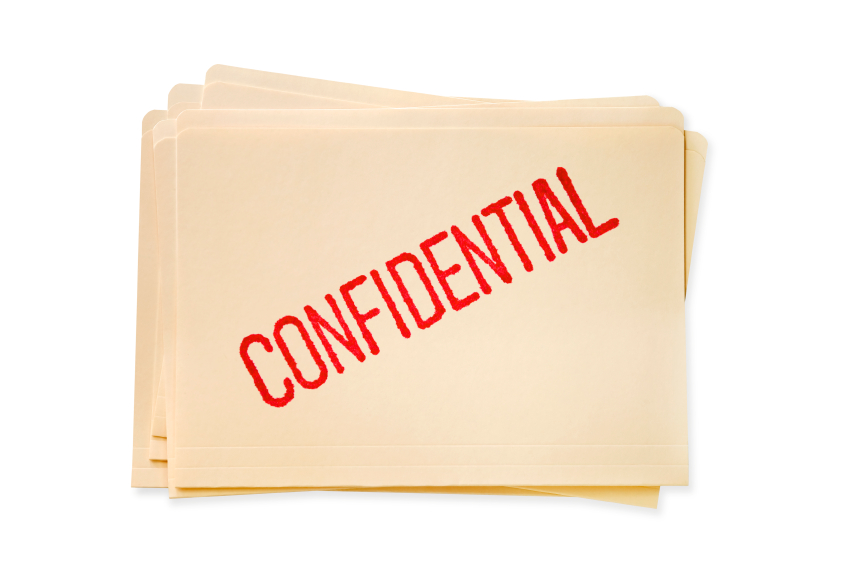Psychotherapy Bulletin
Psychotherapy Bulletin

The Importance of Learning to Give and Receive Critical Feedback
When psychologists believe that there may have been an ethical violation by another psychologist, they attempt to resolve the issue by bringing it to the attention of that individual, if an informal resolution appears appropriate and the intervention does not violate any confidentiality rights that may be involved. (American Psychological Association, 2010, Standard 1.04)
Given this emphasis on personal accountability for ethical transgressions, it is surprising the American Psychological Association’s requirements for accreditation of professional psychology programs do not include mandatory training in providing feedback to peers (2006). Ideally, negative outcomes in future ethical conflicts are diminished by coursework in ethics; however, being informed of the principles of the field does not preclude “grey area” situations from arising in the course of education and training or as trainees ultimately enter the field as licensed clinicians.
The American Psychological Association’s Ethical Principles of Psychologists and Code of Conduct (2010) requires psychologists to address ethical problems with colleagues via communication of feedback in an appropriate manner. In a health service profession with layers upon layers of relationships—supervisor to supervisee, practitioner to patient, professor to student—individuals are constantly collaborating in a shared experience of understanding one another. Given the value program directors who structure clinical psychology training likely place on fostering the community of growth and self-determinism that emerges from peer engagement, it could be considered an oversight when psychologists enter practice without formal preparation in providing and accepting feedback.
In light of the wealth of publications calling for regimented feedback programs in higher education (Cushing, Abbott, Lothian, Hall, & Westwood, 2011; Jonsson, 2012; Al Wahbi, 2014) and the fundamental necessity of receiving and giving feedback effectively as a competent practitioner (Hook, Watkins, Davis, & Owen, 2015), the question then turns to why this valuable learning opportunity is not routinely incorporated in the training of clinical psychologists. While some programs may incorporate formalized opportunities for peer feedback, this aspect of training is left up to the discretion of individual programs; standardization of such an evaluative process and opportunity for professional growth is not enforced by the accreditation requirements overseeing the competence of training programs (American Psychological Association, 2006).
Understanding Feedback
A simplified model of information processing borrowed from cognitive psychology (Groome, 1999) provides an apt metaphor to understand how challenges arise at different stages in the process of peer evaluation. Sense data extant in the environment is processed and integrated for the purpose of turning around output that feedback into the context (p. 2). On the input side, characteristics of the evaluator might impede the process or diminish its value.
Social anxiety and fear of public speaking might be some barriers of this type (American Psychiatric Association, 2013; Boelen & Reijntjes, 2009), to say nothing of personal factors influencing feedback quality, such as tone, negativity of content, etc. Alternately, aspects of the environment might hinder availability of input. For example, a training program in which administrators resist formalized evaluative processes might undermine participation in informal processes spearheaded by students.
Barriers to Receiving Feedback
One of the fears many students harbor in providing feedback to their peers is the risk of it backfiring should feedback be poorly received (Morran, Stockton, & Bond, 1991). Studies on the dynamics of members in small group therapy may shed light on what is driving that apprehension; these include concerns over being misunderstood, of offending, of losing status in the group, and of receiving punitive action for expressing one’s opinion (Morran et al., 1991; Robison, Stockton, Morran, & Uhl-Wagner, 1988). Those suffering from social anxiety may particularly fear negative evaluation from others. Whether these anxieties are well-founded or not, the impact is clear: There are many obstacles that hinder the ability to give and receive critical feedback.
Quality of feedback can often be an impediment to receptivity. Bald criticism may be minimally helpful—only a rare human enjoys hearing “you’re doing it wrong” with no further explanation. Unclear feedback may be equally problematic. Imagine being told, for example, “Your glasses are ugly and probably distract your clients in session.”
The ambiguity of this statement leaves the receiver to ruminate over the broad range of possible interpretations, many of which may be more difficult (or even more painful) than the sentiment from which the initial opinion was born. The pull the receiver feels to dismiss feedback of questionable quality may inhibit subsequent evaluations of substantive content from being taken into full consideration (“Someone who criticizes something as trivial as my glasses probably doesn’t have much to say of value”). Of course people are unreceptive when no opinions are voiced at all, but weaknesses in relevance, appropriateness, specificity, and tone can negate the value of feedback provided and similarly shut down the receiver.
The processing and integration step represents another obstacle to the feedback process. The problem might occur amongst the internal variables of the recipient, wherein personal attributes of the person receiving feedback undermine receptivity. Examples might include arrogance, lack of self-reflective insight, or even language barriers.
Another challenge may arise in the interaction between evaluator characteristics and traits of the evaluated wherein perceptions of questionable credibility of the evaluator undermine receptivity to the feedback produced (Bing-You & Paterson, 1997). In this manner, processing feedback is also at the mercy of both parties’ capacities to effectively navigate interpersonal dynamics of identity (e.g., race, gender, class) and power, as implicit biases may attribute unequal weight to feedback from some sources over others.
Finally, the output manifests in the response to the evaluation and poses its own challenges as it feeds back to the original contributor. Different types of responses to evaluation may undermine subsequent willingness to participate in evaluative experiences. Such damaging experiences might include the program’s punitive action in response to well-intentioned but misguided feedback, or negative verbal responses when personal offense is taken by the individual being evaluated. Obviously, there is a wide array of factors prone to exacerbate the clumsiness of the process in the absence of formalized training on how to give feedback in the first place.
Implications of Lack of Feedback Training
With all of these person- and context-dependent obstacles to overcome, it is not surprising that peer evaluation may meet resistance by students and faculty alike. However, the failure to make use of this learning opportunity may lead to specific deficits in effective practice within the field of clinical psychology. Beyond the gap in preparatory training, there are best practice implications for therapists, too.
To the extent clinicians “preach” giving and receiving feedback effectively as valuable tools for living, it behooves them to “practice” these skills in their own lives. Failing to do so in training represents a missed opportunity to model assertive communication skills therapists often work on honing with clients.
Additionally, a skill requisite to almost all forms of psychotherapy, regardless of orientation, is the ability to challenge one’s clients. Cognitive-behavioral therapists confront cognitive distortions; psychodynamic therapists work toward providing corrective emotional experiences to counter engrained maladaptive organizing principles; behaviorists utilize exposure therapy, literally requiring clients to experience uncomfortable stimuli to systematically desensitize excessive stress reactions. People rarely seek treatment to cope with an overwhelming love of life, expressing no desire for change. To paraphrase the wise words of Cozolino in The Making of a Therapist, “sophisticated and effective practice requires the therapist to be what the client needs, not what she wants (2004, p. 174).
Advantages of Feedback Training
One area that may be overlooked is the potential benefit that providing and receiving positive peer feedback can have on training. Again using the information processing model, variables at each stage can promote self-efficacy, personal and professional growth, and peer culture. On the input side, the peer evaluator is in a unique position to provide insight in the context of a relationship without an inherent power hierarchy, such as is an inherent part of supervisor-supervisee relationships.
Sometimes people are more receptive to critical evaluation from their peers than authority figures (Avent, Wahesh, Purgason, Borders, & Mobley, 2015). If there is an access route to increase receptivity, pragmatism suggests its use without requiring identification of mechanisms of change or etiology of the original problem.
As to the processing stage, individuals who perceive systemic and peer support are more likely to be goal-directed and high-achieving, leading to enhanced self-efficacy, which reinforces progress (Onyishi & Ogbodo, 2012). It seems shortsighted to deny opportunities that might elevate long-term confidence in professional convictions and investment in the field because of initial discomfort with the process. Regardless of whether feedback ultimately improves performance, positive feedback is a desirable part of learning (Hattie & Timperley, 2007), and negative feedback is associated with development of expertise (Finkelstein & Fishback, 2012). Engagement in peer culture promotes a “sense of safety, shared intent, high levels of positive interaction, the effective management of conflict, and support for exploration” and leads to better outcomes for the group as a whole (West, 2001, p. 270).
The output stage provides the opportunity for improvement at both individual and systemic levels. While this opportunity inherently promotes professional growth, participation also enhances peer culture, which then fosters more favorable conditions for critical self-evaluation in a nonthreatening environment. In other words, when feedback is accomplished well, it is an educational opportunity for all parties involved. Comfort with receiving and internalizing feedback through a formalized process may prepare practitioners to re-examine their clinical formulations and biases in the therapy, a self-reflective process shown to yield better outcomes for clients (Macdonald & Mellor-Clark, 2015).
Studies of learning have shown long-lasting changes in behavior to be more readily reinforced when met with reward than punishment (Nakatania, et al., 2009; Guitart-Masip, et al., 2012). Studies have also shown peer support to be associated with positive outcomes across several different measures of success and satisfaction; thus, researchers are calling for use of this aspect of graduate life to facilitate the learning experience (Chui, Ziemer, Palma, & Hill, 2014). As psychologists in training, the failure to capitalize on the power of positive reinforcement as a tool of learning is an ironic omission.
While the American Psychological Association does not specifically require peer feedback for doctoral program accreditation, throughout its guidelines professional training programs are encouraged to “ensure appropriate peer interaction, support, and socialization” (American Psychological Association, 2006). Capitalizing on this opportunity is at the heart and soul of the field’s virtue ethics.
Conclusion
As both an ethical and educational concern, the value of peer feedback is irrefutable, but there is also a humanistic need for this process; in the words of Diana Leafe Christian, “like rocks polishing one another in a rock tumbler, our mutual feedback and requests for change can lead to our each becoming kinder, more aware, more considerate versions of ourselves” (2001, p. 57). To refuse, avoid, or limit the collaborative endeavor of professional growth through interpersonal meaning-making is to refuse to honor one’s potential to receive, internalize, and adapt to that feedback. Thus, the absence of peer feedback opportunities deprives individuals and the field of better informed and more sophisticated practitioners.
Cite This Article
Simmons, A. R. (2016). The importance of learning to give and receive critical feedback. Psychotherapy Bulletin, 51(4), 31-33.
References
Al Wahbi, A. (2014). The need for faculty training programs in effective feedback provision. Advances in Medical Education and Practice, 5, 263-268. doi: 10.2147/AMEP.S62889
American Psychiatric Association. (2013). Diagnostic and statistical manual of mental disorders (5th ed.). Washington, DC: American Psychiatric Publishing.
American Psychological Association. (2006). Guidelines and principles for accreditation of programs in professional psychology. Retrieved from https://www.apa.org/ed/accreditation/about/policies/guiding-principles.pdf
American Psychological Association. (2010). Ethical principles of psychologists and code of conduct. Retrieved from http://www.apa.org/ethics/code/index.aspx
Avent, J. R., Wahesh, E., Purgason, L. L., Borders, L. D., & Mobley, A. K. (2015). A content analysis of peer feedback in triadic supervision. Counselor Education & Supervision, 54(1), 68-80. http://dx.doi.org.du.idm.oclc.org/10.1002/j.1556-6978.2015.00071.x
Bing-You, R. G., & Paterson, J. (1997). Feedback falling on deaf ears: Residents’ receptivity to feedback tempered by sender credibility. Medical Teacher, 19(1), 40-44. http://dx.doi.org/10.3109/01421599709019346
Boelen, P. A., & Reijntjes, A. (2009). Intolerance of uncertainty and social anxiety. Journal of Anxiety Disorders, 23(1), 130-135. doi:10.1016/j.janxdis.2008.04.007
Christian, D. L. (2001). From conflict to connection: The fine art of giving and receiving feedback. Communities, 113, 53-57.
Chui, H., Ziemer, K. S., Palma, B., & Hill, C. E. (2014). Peer relationships in counseling psychology training. Counselling Psychology Quarterly, 27(2), 127-153. http://dx.doi.org.du.idm.oclc.org/10.1080/09515070.2013.873858
Cozolino, L. (2004). The making of a therapist. New York, NY: W. W. Norton.
Cushing, A., Abbott, S., Lothian, D., Hall, A., & Westwood, O. M. (2011). Peer feedback as an aid to learning—What do we want? Feedback. When do we want it? Now! Medical Teacher, 33(2), e105-e112. doi: 10.3109/0142159X.2011.542522
Finkelstein, S. R., & Fishbach, A. (2012). Tell me what I did wrong: Experts seek and respond to negative feedback. Journal of Consumer Research, 39(1), 22-38.
Groome, D. (1999). An introduction to cognitive psychology: Processes & disorders. East Sussex, England: Psychology Press.
Guitart-Masip, M., Huys, Q. J., Fuentemilla, L., Dayan, P., Duzel, E., & Dolan, R. J. (2012). Go and no-go learning in reward and punishment: Interactions between affect and effect. NeuroImage, 62(1), 154-166. http://dx.doi.org.du.idm.oclc.org/10.1016/j.neuroimage.2012.04.024
Hattie, J., & Timperley, H. (2007). The power of feedback. Review of Educational Research, 77(1), 81-112. doi:10.3102/003465430298487
Hook, J. N., Watkins, C. E., Jr., Davis, D. E., & Owen, J. (2015). Humility: The paradoxical foundation for psychotherapy expertise. Psychotherapy Bulletin, 50(2), 11-13.
Jonsson, A. (2012). Facilitating productive use of feedback in higher education. Active Learning in Higher Education, 14(1), 63-76. http://dx.doi.org.du.idm.oclc.org/10.1177/1469787412467125
Macdonald, J., & Mellor-Clark, J. (2015). Correcting psychotherapists’ blindsidedness: Formal feedback as a means of overcoming the natural limitations of therapists. Clinical Psychology and Psychotherapy, 22(3), 249-257. http://dx.doi.org.du.idm.oclc.org/10.1002/cpp.1887
Morran, D. K., Stockton, R., & Bond, L. (1991). Delivery of positive and corrective feedback in counseling groups. Journal of Counseling Psychology, 38(4), 410-414. http://dx.doi.org.du.idm.oclc.org/10.1037/0022-0167.38.4.410
Nakatania, Y., Matsumotoa, Y., Moria, Y., Hirashimaa, D., Nishinob, H., Arikawac, K., & Mizunami, M. (2009). Why the carrot is more effective than the stick: Different dynamics of punishment memory and reward memory and its possible biological basis. Neurobiology of Learning and Memory, 92(3), 370-380. http://dx.doi.org.du.idm.oclc.org/10.1016/j.nlm.2009.05.003
Onyishi, I. E., & Ogbodo, E. (2012). The contributions of self-efficacy and perceived organisational support. Journal of Industrial Psychology, 38(1), 1-11. http://dx.doi.org./10.4102/sajip.v38i1.979
Robison, F. F., Stockton, R. A., Morran, D. K., & Uhl-Wagner, A. N. (1988). Anticipated consequences of communicating corrective feedback during early counseling group development. Small Group Behavior, 19(4), 469-484. http://dx.doi.org.du.idm.oclc.org/10.1177/104649648801900404
West, M. A. (2001). The human team: Basic motivations and innovations. In N. Anderson, D. S. Ones, H. K. Sinangil, & C. Viswesvaran (Eds.), Handbook of Industrial, Work & Organizational Psychology (Vol. 2, pp. 270-288). London: SAGE Publications.





0 Comments